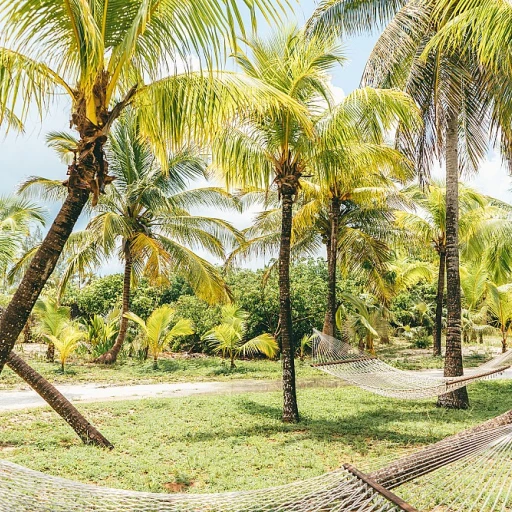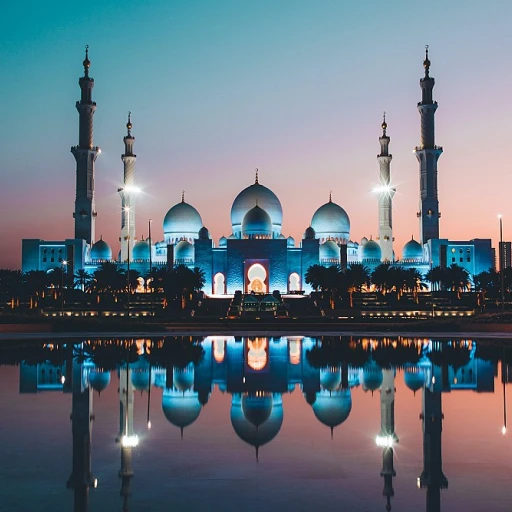Understanding the historical significance of Machu Picchu
Exploring the origins and cultural importance
Machu Picchu, often dubbed the Lost City of the Incas, is a citadel that holds immense historical and cultural significance. Built during the 15th century under the reign of Inca Emperor Pachacuti, it's an architectural marvel set high in the Andes Mountains of Peru. Recognized by UNESCO as a World Heritage Site in 1983 (UNESCO, 1983), it attracts visitors worldwide eager to delve into its rich history.
Archaeological studies suggest that Machu Picchu was a royal estate or sacred religious site for Incan leaders, though its exact purpose remains debated among scholars (Bingham, 1911). The site's precise stone construction exhibits impressive craftsmanship, reflecting the Incan expertise in urban engineering and hydraulic systems.
Interestingly, Machu Picchu was largely unknown to the outside world until American historian Hiram Bingham brought it to international attention in 1911. His efforts in uncovering its layers of mystery have made it one of South America's most visited monuments, drawing millions of tourists annually. In 2019 alone, over 1.5 million people visited Machu Picchu (Statista, 2020).
The Incan connection extends beyond the citadel; the Sacred Valley and the Inca Trail serve as testament to the empire's vast reach and acumen. These trails, temples, and building complexes were integral to the Incas' social and religious practices, creating a sprawling landscape that offers insight into their lives. Exploring hidden temples around Machu Picchu can deepen your understanding of this ancient civilization.
Whether you're embarking on a trek along the iconic Inca Trail or navigating the ruins within Machu Picchu, it's inevitable to feel the deep-rooted energy that speaks to its historical grandeur. Learning about the origins and the thought processes behind such constructions not only enhances your visit but also bridges a connection between today's modern world and the ancient Inca civilization.
The best time to visit Machu Picchu
Discovering the optimal times to visit
Timing is everything, especially when planning the perfect Machu Picchu tour. Each season offers a distinct experience and the decision can greatly affect your travel enjoyment.
Dry season (May to October): This period is considered the best time to visit for clear skies and minimal rainfall. Expect peak tourist crowds, especially in June, July, and August.
Wet season (November to April): Rain is frequent, but it also brings lush and green landscapes. January and February usually see the heaviest rainfall, making the Inca Trail trek challenging.
To beat the crowds, consider visiting during the shoulder months (April and October). The weather is decent, and there are fewer tourists.
Weighing the best time for you
Think about what matters most to you when picking your dates. Are you willing to brave rain for fewer crowds? Is hiking in clear weather a must? Understanding your priorities will help craft the ideal Machu Picchu experience.
According to lonely planet, morning visits around the rainy season might let you catch fog lifting off the citadel, creating a mystical ambiance. Nighttime trains, on the other hand, spare daylight hours and offer unique views.
Choosing the right Machu Picchu tour for you
Finding the Perfect Tour
When it comes to your Machu Picchu experience, choosing the right tour is crucial. With options ranging from the classic Inca Trail trekk and the Sacred Valley day tours to the more relaxed train journeys, there’s something for everyone.
Day Tours
If you’re short on time but high on enthusiasm, day tours from Cusco might be your best bet. These usually start early, around 4 AM, and include transportation, guides, and entry fees. You’ll start the journey from Cusco, travel by van to Ollantaytambo and then hop on a train to Aguas Calientes. From there, a bus takes you to the iconic Machu Picchu. Expect around four hours to explore the site with a knowledgeable guide.
Inca Trail Trek
For those looking for a more immersive adventure, the Inca Trail offers a grueling but rewarding experience. Be ready to commit to at least 4-5 days depending on the trail you choose. According to Alpaca Expeditions, around 75% of their trekkers report the journey itself a highlight, not just the destination. Plan your trek around the dry season (May to September) for the most comfortable experience.
Luxury Train Tours
If comfort and leisure are more your style, consider luxury train tours. Companies like Belmond’s Hiram Bingham offer an opulent journey that includes brunch, live entertainment, and a guided tour of Machu Picchu. It’s well-suited for those who enjoy a bit of luxury while taking in the breathtaking scenery of the Andes.
Family and Group Tours
Traveling with kids or in a group? Consider tours that cater to families or groups. These tours often include educational components and activities that keep everyone engaged. Also, the guides will adjust the pace, making them ideal for mixed-ability groups.
DIY Trips
If you’re a seasoned traveler who prefers independence, you can also plan a DIY trip. Book your train tickets via Peru Rail or Inca Rail, and purchase entry tickets well in advance. With a little research, you can also find local guides in Aguas Calientes.
Local Insights
Consult locals and previous travelers for insights. Review platforms like TripAdvisor offer extensive feedback. You will find plenty of suggestions and reviews that can help you decide. Many travelers recommend booking tours through local companies for a more authentic experience.
Cost Breakdown
Finally, it’s essential to factor in the costs. As of 2023, day tours range from $100 to $150 USD, while the Inca Trail trek can cost between $500 to $900 USD, depending on the tour operator and services included. Luxury train tours may run you upwards of $700 USD but offer an unparalleled experience.
What to expect on the Inca Trail trek
Get ready for the challenges ahead
Walking the Inca Trail is not a stroll in the park, but it's an unforgettable journey. This as historical tourism has shown, capturing the essence of ancient cultures while pushing your physical limits.
It extends over 26 miles and usually takes about four days. Be prepared for steep climbs, rocky terrain, and even some altitude sickness. However, the breathtaking views of cloud forests, Incan ruins, and snow-capped mountains will keep you motivated. According to Alpaca Expeditions, 95% of trekkers rate the experience as life-changing.
Accompanying you will be knowledgeable guides. One respected guide, Guido Mamani, has been leading tours for over 15 years. He's passionate about sharing the history and culture of the Inca civilization. His stories make you feel connected to the ancient trail beneath your feet.
What you’ll see along the way
The Inca Trail is speckled with ruins, flora, and fauna. Among the most notable are Runkurakay, a small oval structure believed to be a resting place for messengers, and Phuyupatamarca, known as the ‘Town in the Clouds.’ Researchers documented 367 species of orchid discovered along the trail, making it a botanist’s dream.
Preparing adequately
You don’t need to be a seasoned hiker, but preparation is key. Start training at least a month before, focusing on cardio and strength. The Peruvian government restricts the number of Inca Trail permits to 500 per day, including guides, so book your spot months in advance. The cost for a trek typically ranges from $500 to $800 USD.
Pack essentials like a good pair of hiking boots, a sleeping bag suitable for cold nights, and sun protection. Always stay hydrated and balance your pace to avoid overexertion. A guided tour will usually include porters to help with heavy gear, allowing you to enjoy your surroundings more freely.
Remember, your journey on the Inca Trail is a segment of your Machu Picchu experience. Along with the sacred valley, it's a testament to why Peru continues to captivate adventurers and history enthusiasts alike.
Exploring the Sacred Valley and its connection to Machu Picchu
Dive into the sacred valley and feel the ancient energies
The Sacred Valley, or Valle Sagrado, plays a crucial role in understanding Machu Picchu's mystique. This lush stretch between Cusco and Aguas Calientes follows the whims of the mighty Urubamba River, creating a natural corridor that was crucial for the Inca civilization.
History etched in every corner of Ollantaytambo
Ollantaytambo, both a village and the archaeological site, symbolizes the intricate engineering marvels and the spiritually rich life of the Inca. Reports (source: Peru Travel Official) state that approximately 5 million tourists visit Peru yearly, with many marking Ollantaytambo as a vital checkpoint on their journey to Machu Picchu.
The agricultural marvels of Moray and Maras
Moray isn't just another site; it's where you witness the Incas' agricultural prowess. These circular terraces served as an experimental hub for cultivating different crops at varying altitudes. Nearby, the salt pans of Maras continue to be farmed the way the Incas did, with over 3,000 salt pools still in use today, yielding a pristine product for locals and tourists alike.
Pisac: a gateway to Inca cosmos
Pisac's ruins and vibrant market offer a snapshot into the Inca worldview. The terraced mountains look like stairways to the gods. According to Lonely Planet, Pisac draws thousands of visitors weekly, seeking to explore its spiritual and commercial realms.
Connecting the dots to machu picchu
These places aren't mere stopovers; they connect the dots of the ancient Inca world's story, offering profound insights that enhance the wonder of reaching Machu Picchu. Dive into the Sacred Valley's history; feel the pulse of the ancient energies guiding your steps towards the majestic citadel.
Essential tips for visiting Machu Picchu
Smart packing tips for your day trip
Planning a Machu Picchu tour can be a mix of excitement and anxiety. Nobody wants to be that person realizing they've forgotten something essential. Here are a few smart packing tips to keep in mind:- Layered Clothing: Weather can be unpredictable. Mornings start chilly, but you might find yourself sweating by midday. Think light layers that are easy to peel off and pack away.
- Comfortable Footwear: Your feet will thank you. Plan for a lot of walking, possibly climbing. Sturdy, broken-in hiking shoes or boots are essential.
- Reusable Water Bottle: Hydration is key. There's a lot of uphill trekking involved, better be prepared.
- Sunscreen and Hat: The Andean sun can be fierce—even on a cool day. Protect your skin from exposure.
- Snacks: While there are eateries near Aguas Calientes, having energy bars or dried fruit can keep you fueled on the go.
- First Aid Kit: Basic first aid supplies can come handy—think blister patches, antiseptic wipes, and pain relievers.
- Cash: Small denominations are handy for tips, buying local crafts, or emerging needs.
Master timing for the best experience
Timing is everything. Get it right, and you'll have the Machu Picchu sacred experience of a lifetime. Here are some expert insights:- Avoid Peak Hours: According to data, visitor numbers peak between 10 AM and 2 PM. Aim for early morning or late afternoon for fewer crowds.
- Seasonal Timing: April to October is the dry season, ideal trekking conditions. But if you don't mind a bit of rain, the off-season provides a quieter experience.
Guided tours vs going solo
So, to book a guide or not? Both have their perks:- Guided Tours: Expert guides add layers of history and stories to the ruins. Plus, it takes away the stress of planning. Tours like Alpaca Expeditions have exceptional reviews on Tripadvisor for their comprehensive experiences.
- Going Solo: You're on your own timeline. Dwell longer at the Sun Gate or make a spontaneous detour. More flexibility but requires solid prep.
The unmissable spots
What not to miss? Here's a quick checklist:- Intihuatana Stone: A ritual stone that echoes ancient Inca astronomy.
- Temple of the Sun: Central to the site's solar worship.
- Huayna Picchu: Offers breathtaking views—if you can handle the steep climb.
Eco-friendly travel tips
Respect the environment as you explore this UNESCO Heritage Site:- Stick to Designated Paths: Off-track trekking damages fragile ruins.
- Leave No Trace: Carry all trash out with you. Preserve the beauty for future visitors.
- Support Local: Buy souvenirs from local artisans. Contribute to the community sustaining this magical place.
The journey from Cusco to Machu Picchu
Travel from Cusco to Aguas Calientes by train
Most adventurers kick off their Machu Picchu tour from Cusco. From here, you have multiple options, but catching a train to Aguas Calientes is the most popular. PeruRail and Inca Rail offer scenic journeys that last around 3.5 hours. Seats vary, with some trains providing luxurious services and panoramic views for around 200 USD, while others offer more budget-friendly options.
The stunning vistas along the Urubamba River
As the train snakes through the sacred valley, you'll get to see some breathtaking sights. The lush greenery of the Urubamba River and the majestic Andes will captivate you. Many travelers have noted that the journey itself is a highlight. Instagram is full of posts showcasing these unforgettable views, reflecting the emotional connection people feel to this land.
Hiking the Inca Trail for the adventurous
If you're the type who loves a good challenge, the Inca Trail can be your path to Machu Picchu. It's a 4-day trek that culminates in the Sun Gate, offering unrivaled views of the Inca citadel. Companies like Alpaca Expeditions will guide you through this strenuous but rewarding journey. Expect to pay around 600-700 USD for a guided tour.
Arriving in Aguas Calientes
After your train ride or hike, you'll arrive in Aguas Calientes, the closest town to Machu Picchu. Here, you can spend a night to recuperate. The small town is charming, with local markets and hot springs to enjoy before tackling Machu Picchu.
The journey from Cusco to Machu Picchu is more than just a travel route; it's an integral part of the full experience. Whether you prefer the comfort of a train or the rough-and-tumble of the Inca Trail, getting there is a journey filled with anticipation and breathtaking scenery.
Machu Picchu's must-see highlights and trails
Sun gate views
The first stop for many trekkers, the Inti Punku - or Sun Gate - offers a jaw-dropping panoramic view of Machu Picchu. This spot, located at 2,720 meters, serves as the final checkpoint for those completing the Inca Trail. The view of the citadel at sunrise is considered one of the finest experiences on the tour, with an influx of warm orange light illuminating the ruins.
Temple of the sun
The Temple of the Sun showcases Inca architecture at its peak. Originally used for astronomical purposes, the temple is particularly famous for its precision masonry and its location directly above a large natural cave. Experts believe this was a site for high priest rituals. If you are visiting around the solstice, you can witness how the sun perfectly aligns with the temple stones, creating a spectacular visual effect.
Huayna picchu hike
Not for the faint-hearted, the hike up Huayna Picchu offers both challenge and reward. This steep and narrow trail takes about 2 hours to complete, but the effort is well worth it. From the summit, you’ll be greeted with a bird's-eye view of the Machu Picchu complex and the Urubamba River snaking its way through the valley below. The trail is limited to 400 hikers per day, so make sure to book in advance!
Central plaza
The Central Plaza served as the heart of social activities at Machu Picchu. Surrounded by terraces and buildings, this open grassy area would have been a bustling hub for festivals, ceremonies, and everyday life. This is an ideal spot to pause, reflect, and take in the energy of the ancient citadel.
The inca bridge
For the adventurous, a visit to the Inca Bridge is a must. This stone bridge is built on a sheer cliff face, showcasing the Inca engineering prowess. The narrow trail leading to the bridge is no joke, with only a wooden plank spanning a large gap in the path. This site gives insight into the security measures taken by the Incas to protect their stronghold.
The sacred rock
Shaped like the sacred mountain Pitusiray, the Sacred Rock was a place of worship and a testament to how the Incas revered nature. This large stone monument is located at the far end of the site and holds significant cultural value.
With proper preparation and a well-planned itinerary, your Machu Picchu tour will be a memorable experience filled with awe-inspiring highlights and unforgettable memories. From the Sun Gate to the Sacred Rock, every corner of this ancient site tells a story of the remarkable Inca civilization.

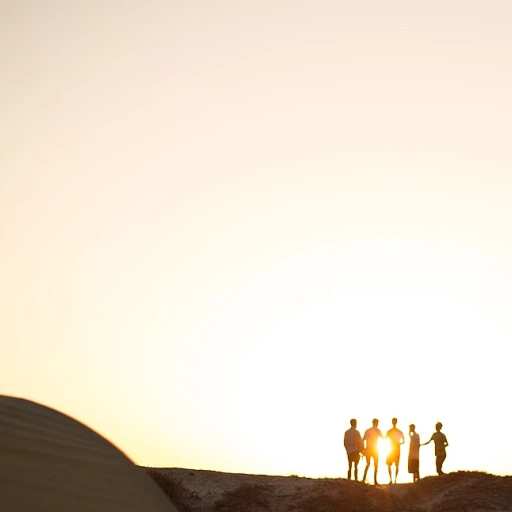
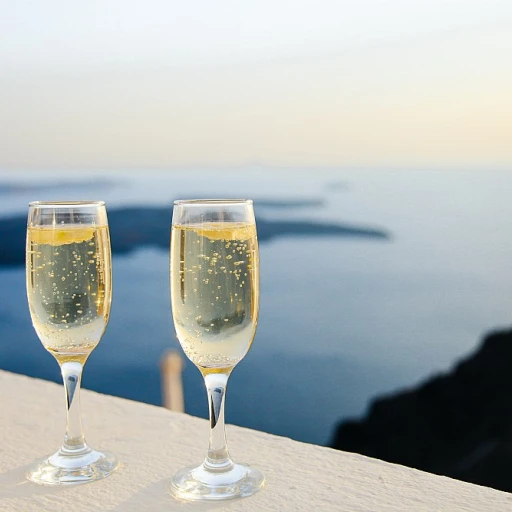

-large-teaser.webp)
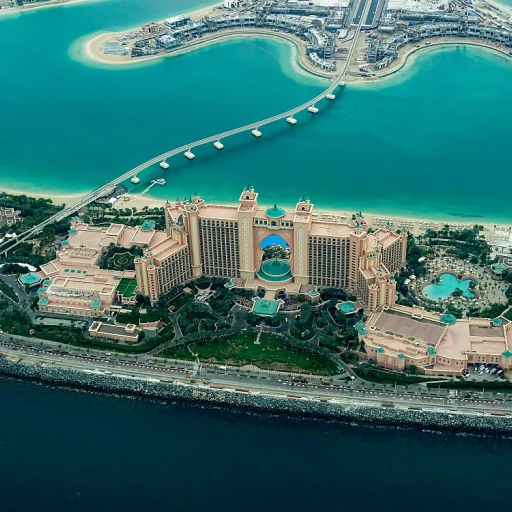
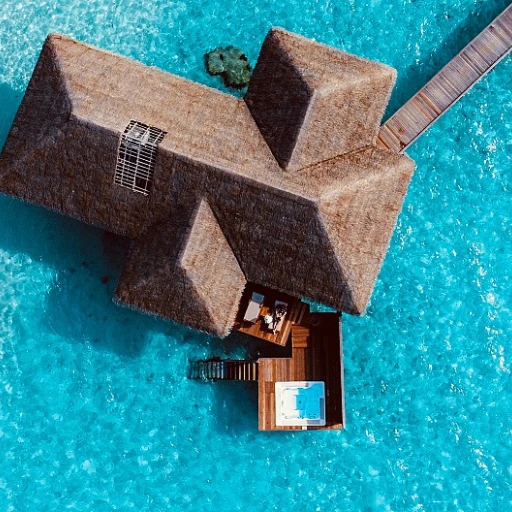
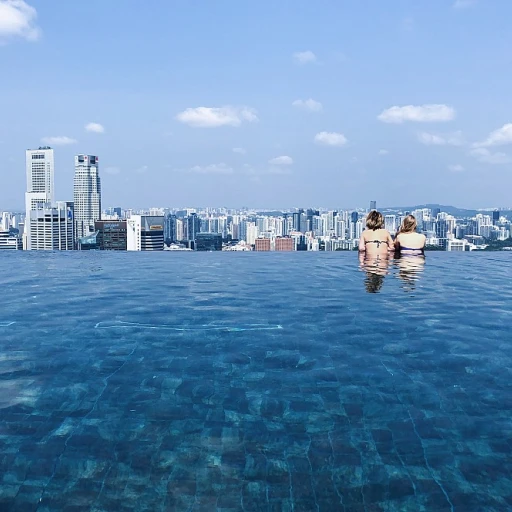


-large-teaser.webp)
